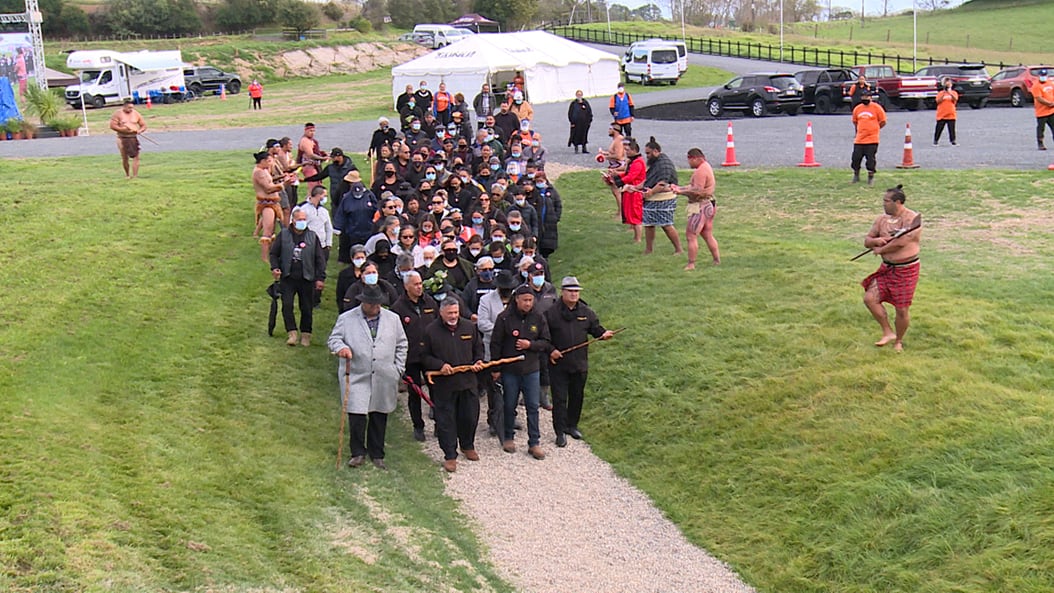The bloodiest battle of the New Zealand land wars, at Rangiriri, will now be commemorated with the launch of the Rangiriri trenches, a tourism venture.
Some 159 years ago, 1500 British soldiers invaded Waikato. Rangiriri became known as the bloodiest of all of the New Zealand land war battles. And, after this battle, 1.3 million hectares of land were confiscated.
Today the Rangiriri trenches were opened to remember the past, preserve and share knowledge, and become a tourism venture.
Te Tumu o Te Rūnanga o Ngāti Naho Brad Totorewa, was the visionary for this inititative in 2013.
It took nine months to build, and cost $3 million funded by the government and iwi. It is hoped that this could create 50 jobs in the community.
Time to hear the stories
“My emotions are running high. And it sits deep within the centre of my heart. The time has come for the country and the world to hear stories of the people from this land,” Totorewa says.
Today was one of four days of celebrations of the completion of the trenches. The people of 67 marae from Tainui waka known as Ngā Marae Tōpū were the first to experience the trenches. This added up to 700 people attending on day one, with three pōwhiri held to cater for such large numbers.
Totorewa said Ngāti Naho by no means held authority over this venture, and partnerships were made with the Crown over past years.
“Today 159 years have passed since the battle of Rangiriri and we are now in a better position to move this initiative forward.”
‘If the men shall die …’
The trenches experience lasted over 45 minutes as people walked through the life-sized trenches to the sounds of pūtātara and kōauau (Māori wind instruments) along with live performers, from children playing ti rākau to men in full traditional war regalia striking their taiaha and toki into the air while bellowing in haka. There were also kaikaranga and wāhine doing pao or laments to help paint the picture of what life was like for those at Rangiriri Pā before the devastating attack.
There was also a scene with children hiding in a dugout with rākau that represented guns and quickly reminded the visitors of the famous Waikato saying, “Ka mate ngā tāne me mate hoki ngā wāhine me ngā tamariki”- If the men shall die, so shall the women and children.”
More British soldiers were killed at "Bloody Rangiriri" than in any other battle of the land wars.
Following the invasion of Waikato, Māori built a defensive line across a narrow strip of land between the Waikato River and Lake Waikare.
The central redoubt, the work of the chief Te Wharepū, was a carefully hidden trap with concealed firing positions. But the formidable fortification was incomplete.
It was also undermanned, with only about 500 fighters present, one-third of the British strength. The prolonged defence of downstream Meremere had stretched Māori resources – and it was planting season.
Imperial troops were landed by boat behind the Māori lines and the outlying earthworks were cleared. The central position remained unbreached despite repeated frontal assaults. Forty-seven British and 35 Māori were killed in a few hours.

‘So shall it be returned’
Parehiwa Totorewa of Ngāti Naho cried when she entered the trenches, “and my heart skipped a beat when I heard the children calling to us,” Totorewa said.
Vincent Hapi from Maurea Marae said he was overwhelmed with today’s opening and the return of this land for use as a commemoration.
“It was from the lasting words of King Tawhiao, ‘So shall the land be taken, so shall it be returned’,” Hapi said.
And Erin Paki from Hukanui ā Muri Marae said, “I heard the welcomes from the children and the laments of the women in their sadness representing what happened here those years ago. It was very emotional walking through the trenches.”
The Rangiriri Trenches will be a place of learning first, then a tourism venture where people will pay to come and visit, “In the hope to provide jobs for the next generation,” Totorewa says.
“We will closely adopt the Hobbiton venture idea but of course, do a lot better than them.” This Saturday King Tūheitia and guests will visit the Rangiriri Trenches, where his great great great grandfather and predecessor King Tāwhiao fought.
In 1995 the Crown acknowledged its wrongdoing and settled $170 million on Waikato.
